Basics for your first flights!
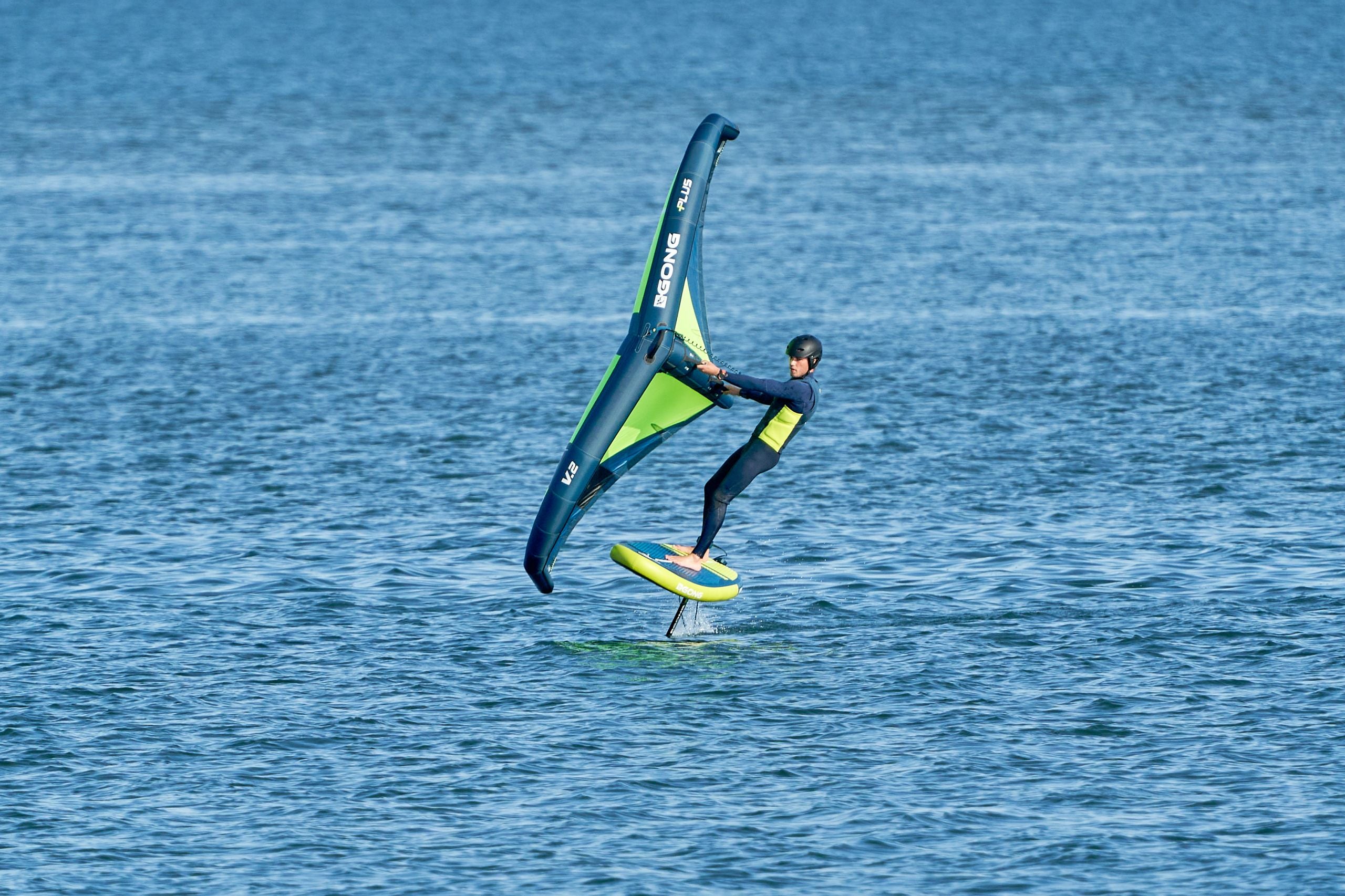
Here are some key fundamentals to sailing to help you with your first flights !
Some beginners manage to fly from their very first wing foiling session, some within just a few sessions. For others something isn’t clicking. No reason to give up though because only a few adjustments are usually enough to unblock the situation. Let’s review the basics together.
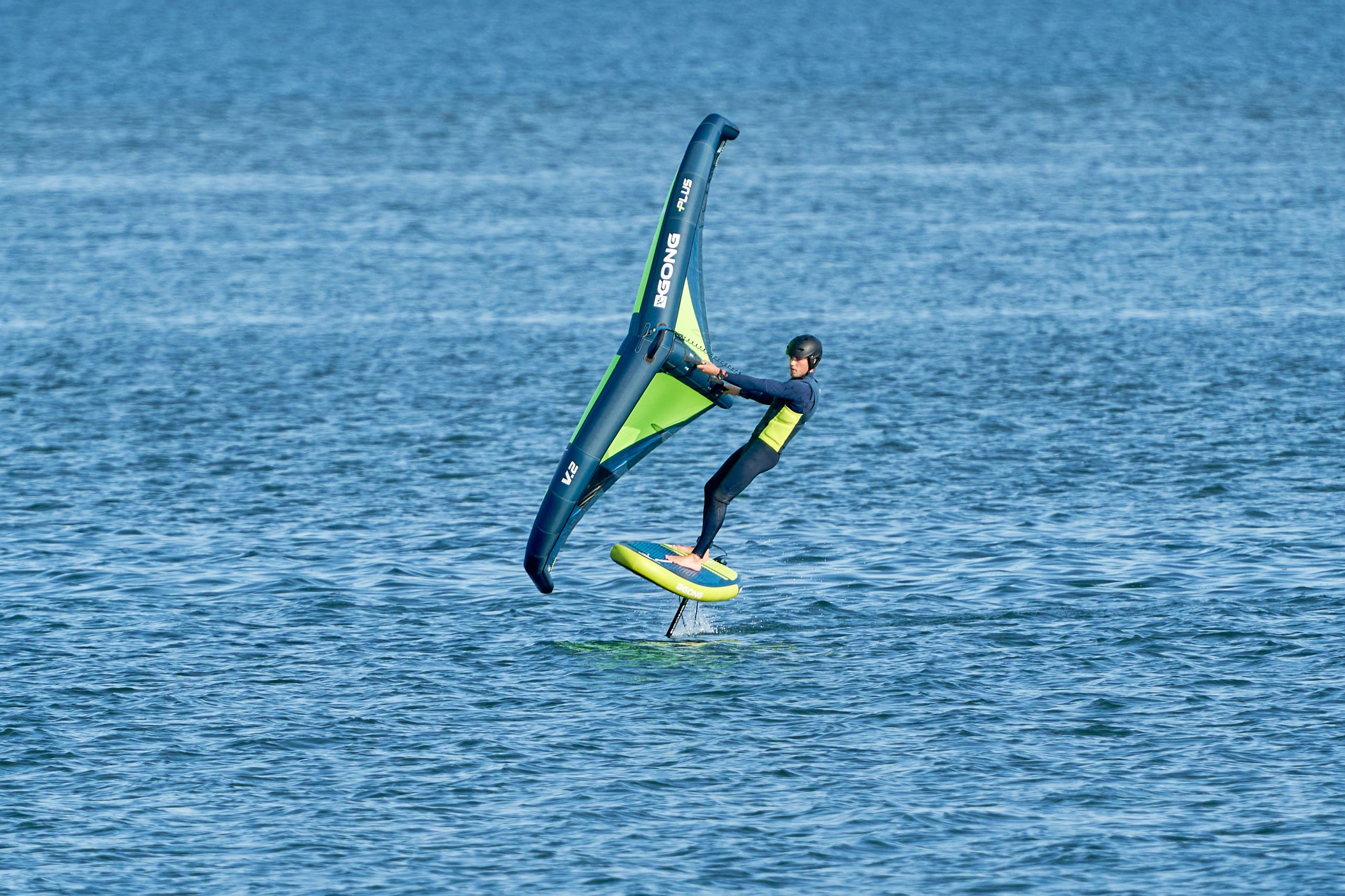
Note to begin with that it is normal to struggle if you learn in bad conditions or with inappropriate gear. Learning to wing foil with a performance foil mounted under a small board in choppy conditions with onshore winds blowing in gusts is like learning to ride a bicycle with an enduro motorcycle on black ice. The odds of making any kind of progress are bad 😉 Under the right conditions, wing foiling is as accessible as any other sport. The board must be stable with a foil that offers a lot of lift and tolerance at low speeds. The body of water should be calm with a wind that allows you to balance yourself easily, that is to say a wind that’s rather a little too strong than too light. While the wind should be your best ally to balance yourself on the board, many beginners can’t cope with its power. They try to force it instead of using it to their advantage and eventually surrender to its power and fall.
If you are equipped with suitable gear (see our How To), and the wind conditions are favorable, it is therefore on this last point, the management of your balance with the wing that adjustments are necessary. Here are four common errors we see:
The wing touches the water and you are unable to recover. It’s a splash.
We all go through this and it highlights a basic rule in wing foiling.
When stationary, to prevent the tip of your wing from catching the water, keep the central strut in line with the wind. The wing then naturally goes into the “umbrella” position. This position of the wing above your head allows you to hold on to the wing for balance and keeps the whole wing at a good distance from the water.
To move forward, the central strut must take an angle with respect to the axis of the wind. To do this, starting from the previous position, gradually lower your front hand, little by little, which will make you move forward. As you gain speed, the central strut takes an angle with the wind until it is completely horizontal when you are at full speed. The wing is then straight in front of you.
All the explanations on this key element in this How To.
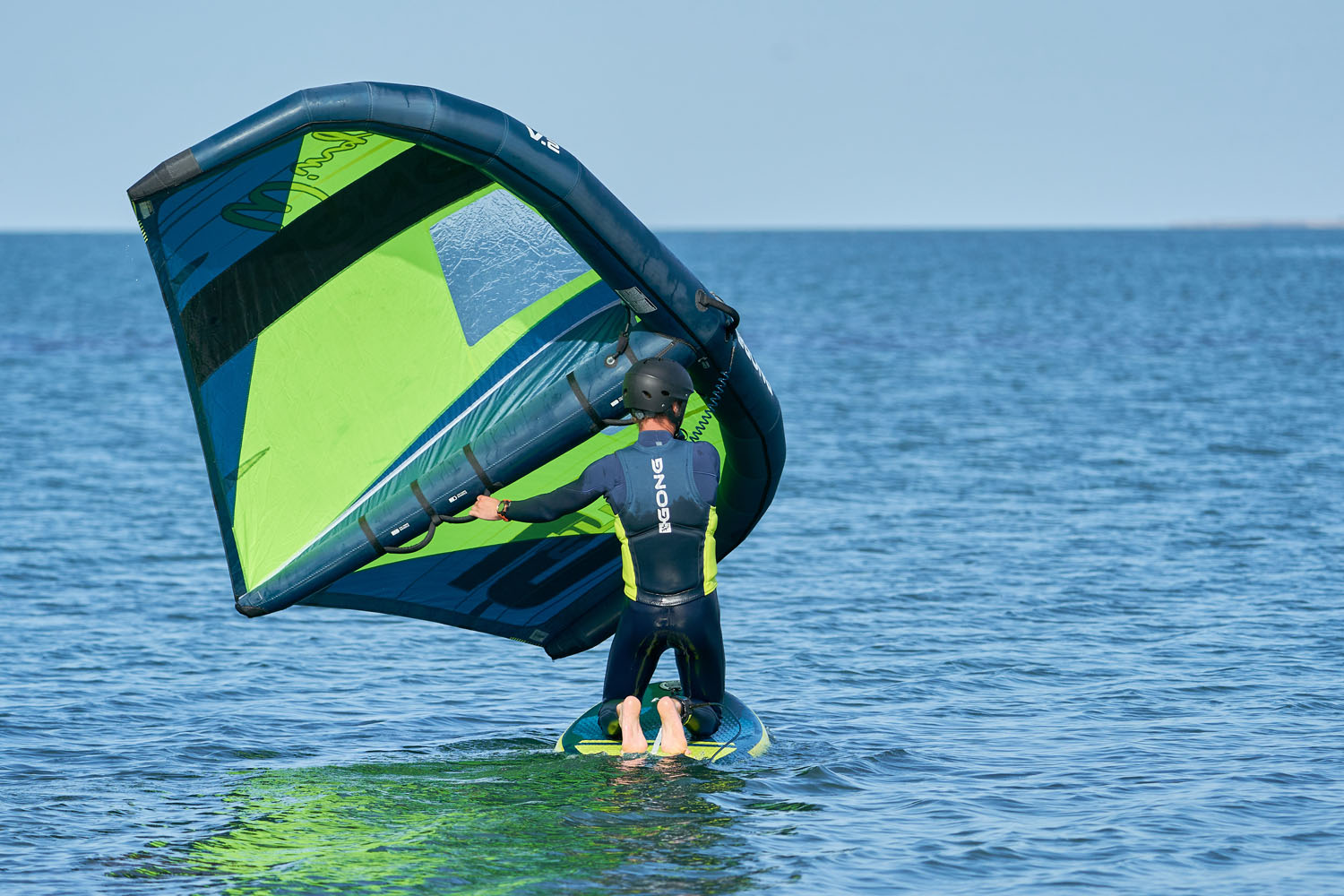
You gain some speed but fall forward at the slightest gust, without having taken off.
The warning sign of this fall is an unacademic position with your booty pointing back in an attempt to counter the power of the wing. Having no control on the power of the wing, you suffer from its power rather than using it to balance yourself. As a result, you try to push through with strength, in most cases with a lot of weight on the front leg to counter the wing’s power (which is counterproductive to take off). You resist until you suddenly fall forward. Another splash.
If this situation is familiar to you, we recommend a practical exercise on the beach to better understand how to manage the wing’s power. This is done by sheeting in and shocking the wing as one does for the sail of a boat. To shock is to give slack and to sheet in is to put more tension on the wing. That is to say, relieve or increase the power of your wing by modifying its angle in relation to the wind. With a wing this is done a bit like in windsurfing by letting go or pulling with the back hand. The difference in wing foiling is that your leading edge is not fixed to the deck of your board. This angle can therefore also be modified with the front hand. To simplify the exercise, first consider your front hand as a fixed point. Hold your front hand kind of close to your face with your arm bent. For the time being, only use the back hand to manage the power. Consider your rear handle as your throttle control.
When stationary, a sheeted-in wing pulls in the arms. By walking at a good pace with the wing still sheeted-in, you’ll notice that the effort in the arms lightens. Ditto on the water, when you gain speed while flying, the traction in the arms decreases because you move with the wind. For the traction in the arms to become manageable without having to move forward, you have to shock the wing (i.e. push on the back hand) until the power is “manageable”, that is to say without having to balance yourself with your booty pointing backward ;). You must be able to maintain your body straight as a die and in position by managing the power of the wind only with sheeting in/shocking movements with the rear handle. Micro-adjustment like this must be permanent because the wind is never perfectly regular. Do this simple exercise when stationary, if you manage to stay in place and straight as a die in the gusts, it means you have the trick down. Then do it by walking fast, remembering what is said in the previous point on the central strut which gradually takes more angle as you pick up speed.
The point of having your front arm bent with your front hand fairly close to your face is to keep room to strike with your back hand. If your front arm is totally stretched out, your back arm will be too. Meaning you’ll lose control with the slightest gust because you can no longer shock the wing by extending your rear arm, which is already totally stretched out. If this happens, you have to shock by folding the front arm. When sailing, the front arm is stretched out to pump and to bear off to gain speed. This is essential to take off but the exercise here is to control your balance using the wing. So keep your front arm bent for this exercise.
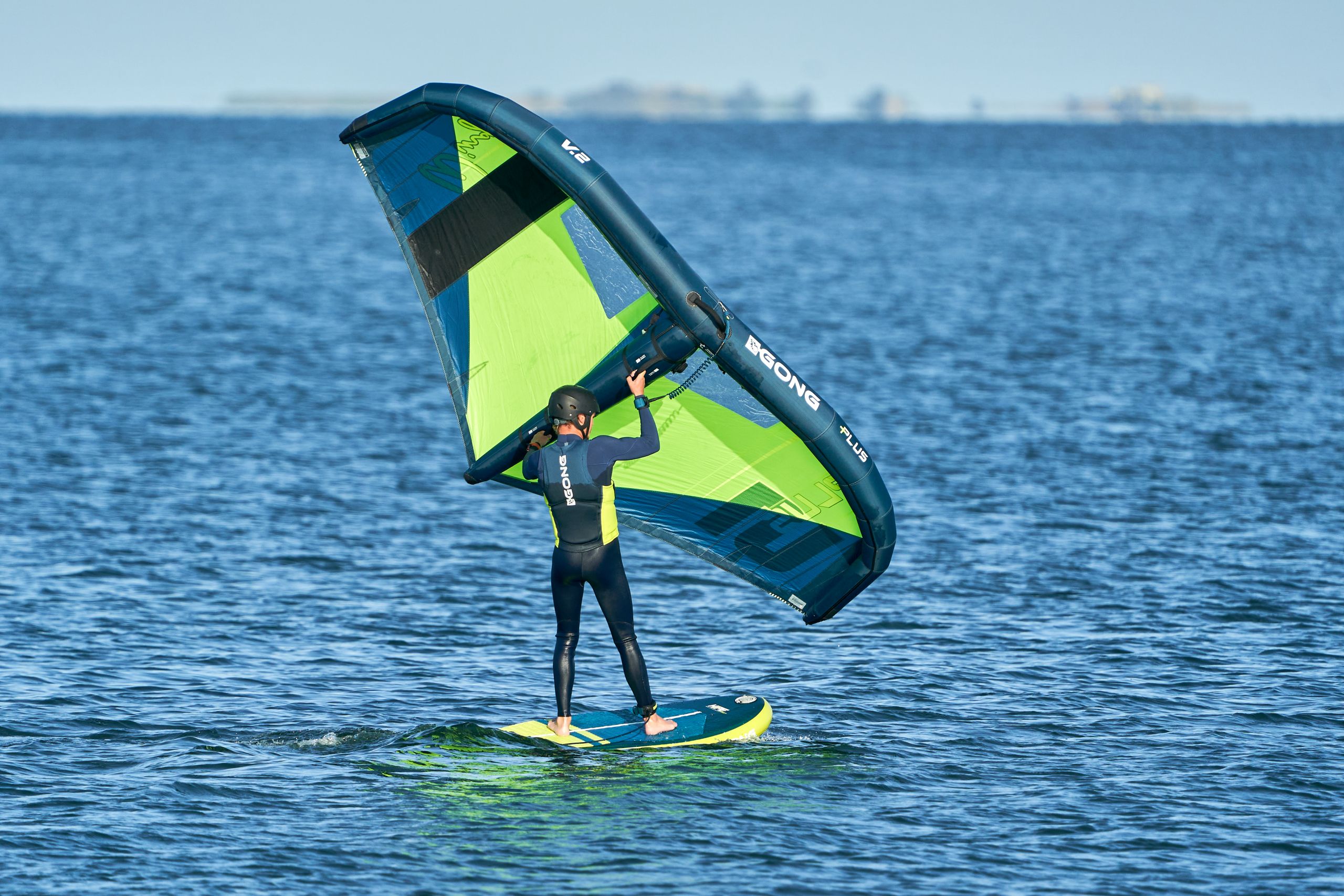
You cannot take off despite having a good balance on the board
Short answer: there is not enough wind! 😉 If on the beach you are unable to oppose your weight or at least a little force to the wing, it means that there won’t be enough wind for a take off (unless you have a good pumping technique). If the wind is sufficient, slightly bear off while gaining speed by giving air to your wing should allow you to take off. To fly, speed is the only thing you need. Pick up speed and the plane of your foil will lift you off the sea level. You first start with a crosswind (i.e. with the wind blowing in your back), but to gain speed you have to follow a line that slightly pulls away from the wind, i.e. bear off (be careful, bearing off too much will be counter-productive). If that’s still not enough to take off, a few pumping strokes are necessary. Pull on the two handles in bursts, pressing in synch with your legs to launch the board (see our How To).
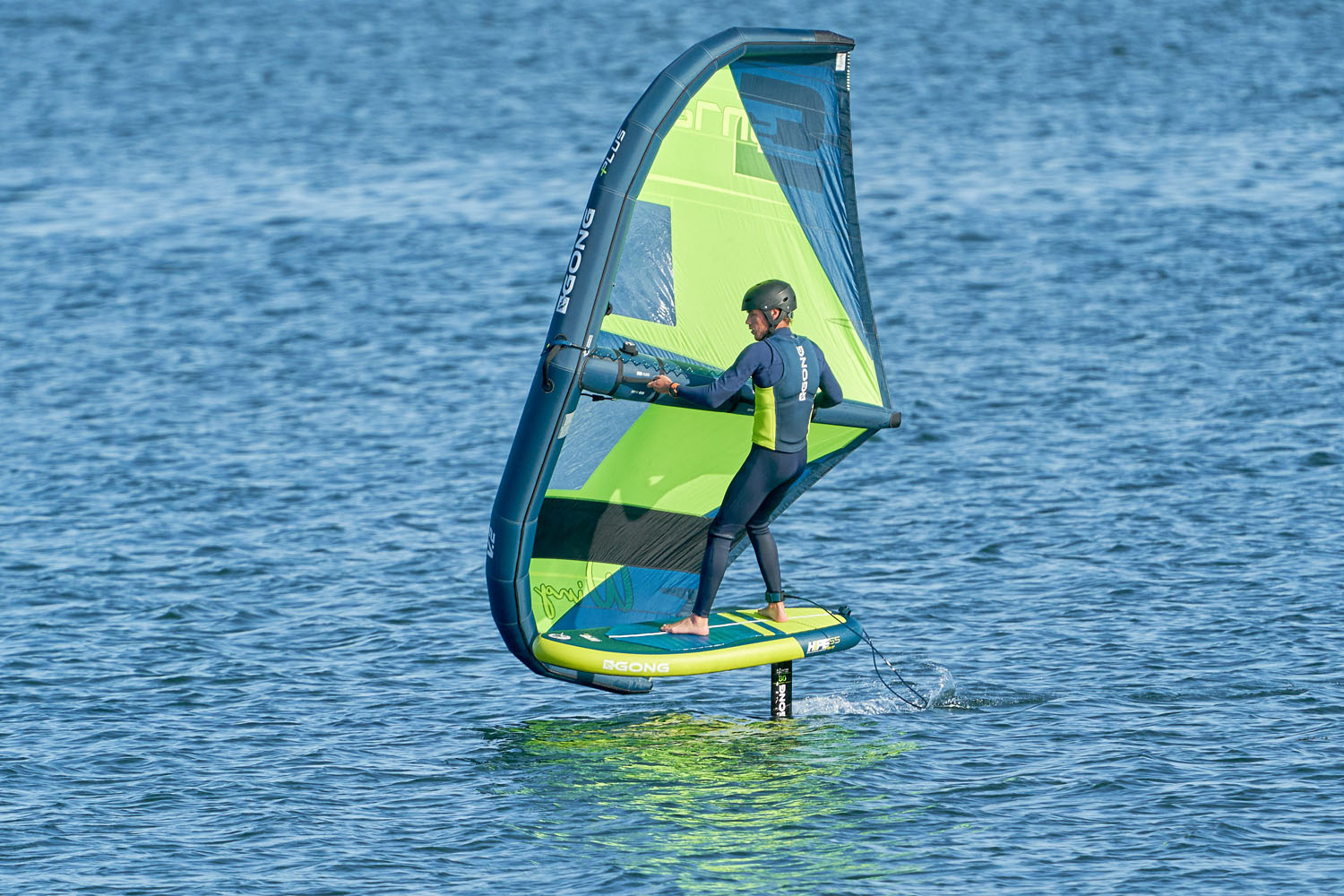
You fly but immediately lose control.
That’s it, you manage to take off but you have no idea what to do next. So you float towards unknown territory, holding on tight and hoping for the best. This first fly can only last this long. Another crash is around the corner 😉 Let’s see what you have to do to maintain the flight and orient yourself.
First, note that in flight you are no longer floating on a board but are supported by an airplane. Without speed, nothing flies. As soon as you slow down, you dive. This is called porpoising. You bounce on the water like the pioneers of aviation on the first runways, lacking speed and lift with their rudimentary equipment. As for an airplane, you have to keep the throttle open after takeoff. On a wing foiling board, your rear handle is your throttle control. If we simplify, by sheeting in, you increase the power of the wing, which makes you gain speed and therefore lifts the foil. To let go of the gas, you have to shock the wing, the speed decreases and your foil gradually dives. You have to constantly adjust between sheeting in and shocking to manage the height of your flight, while staying on the right point of sail. This last part is about how to orient yourself.
A point of sail is a direction of travel in relation to the wind direction. If you have a line that heads too much upwind, you will lose speed facing the wind and lose your flight. To maintain a good speed that allows you to fly, the most effective point of sail is crosswind (you move on a line perpendicular to the axis of the wind). Going downwind (which is equivalent to moving away from the wind, the opposite of going upwind), allows you to gain speed to maintain your flight. Be careful not to overdo this because by dint of going in the same direction as the wind the pressure in the wing decreases (your speed and that of the wind cancel each other out, to put it simply). Slightly sailing downwind is interesting for gaining speed on takeoff or in flight. Flying crosswind is easier for control because we have a more constant power in the wing.
If you involuntarily sail upwind it is probably because your wing is too far on the back. Do the test on your knees when you get on the board. If you place your wing on the back of the board, your board will point its nose towards the wind. Your foil acts like a large fin around which you can turn by placing your wing either on the back or on the front of the board. In the first case the board turns towards the wind, in the second you will find yourself going downwind. It’s the same when sailing. To maintain your direction, adjust the placement of the wing. If you have enough speed, take the opportunity to go upwind. On the other hand, as soon as you slow down to the point of losing flight, go slightly downwind to accelerate. To bear off you can stretch out the front arm which will automatically place the wing a little more on the front of the board. To go upwind, a good position is a bent front arm, the front hand close to your face and a look that carries towards the source of the wind.
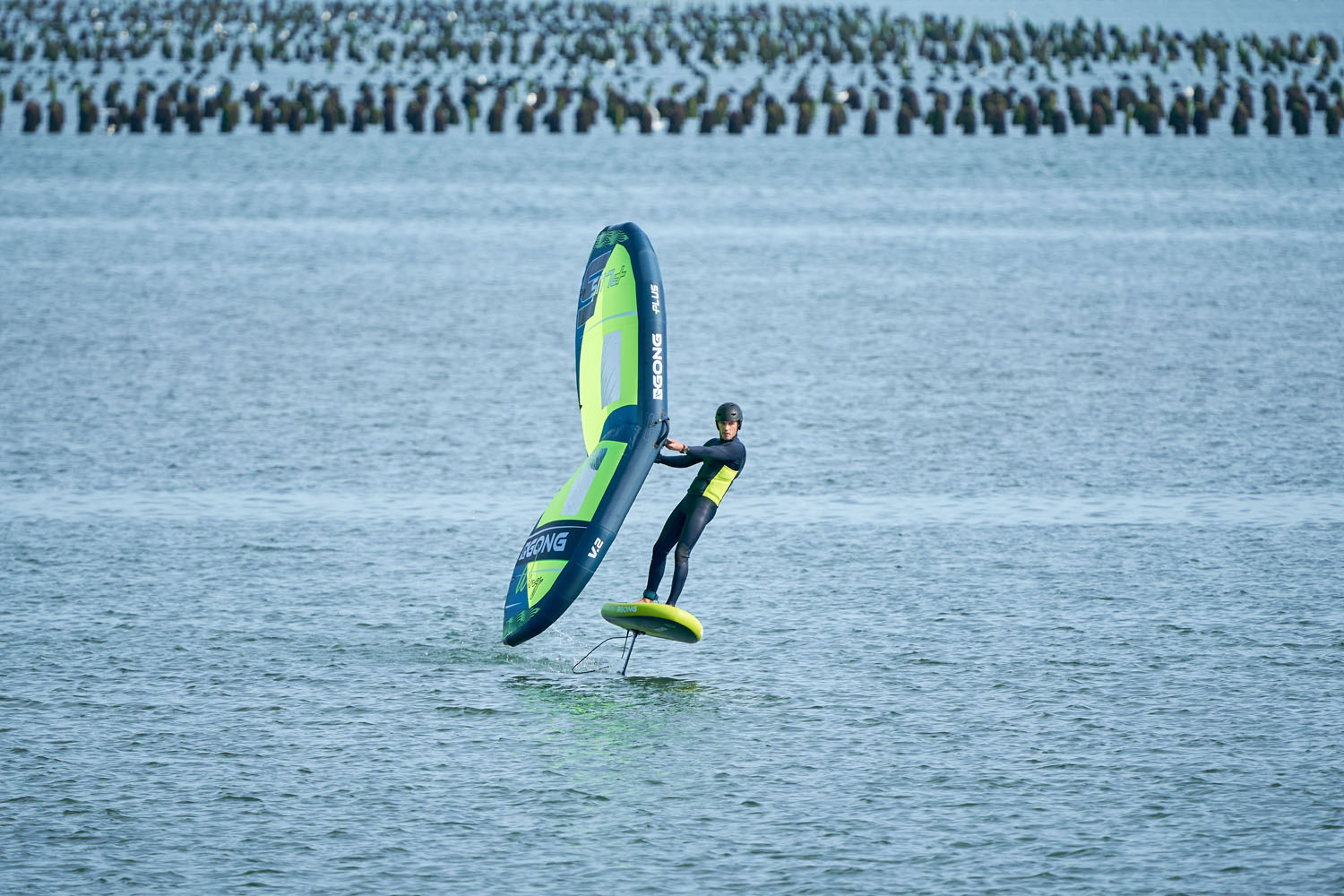
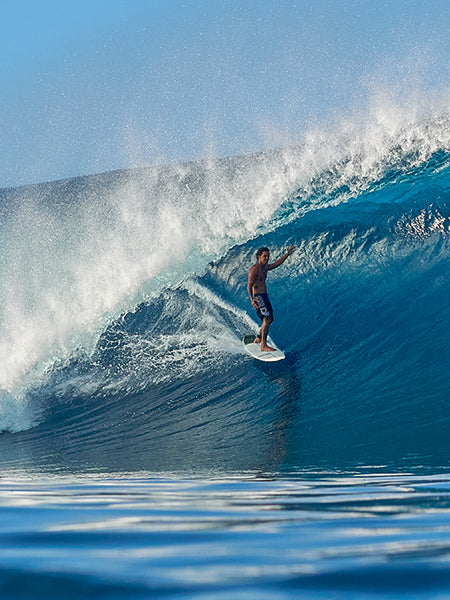
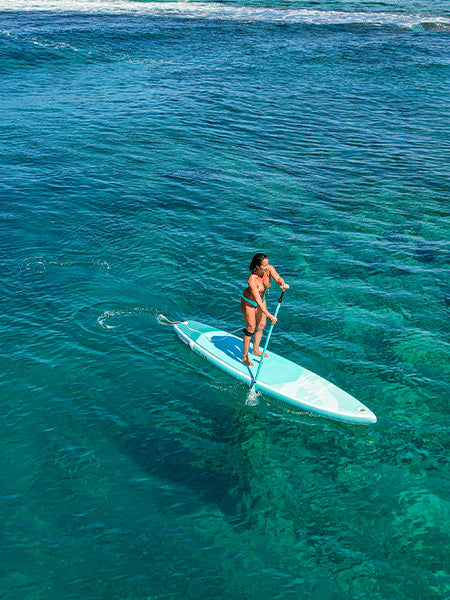

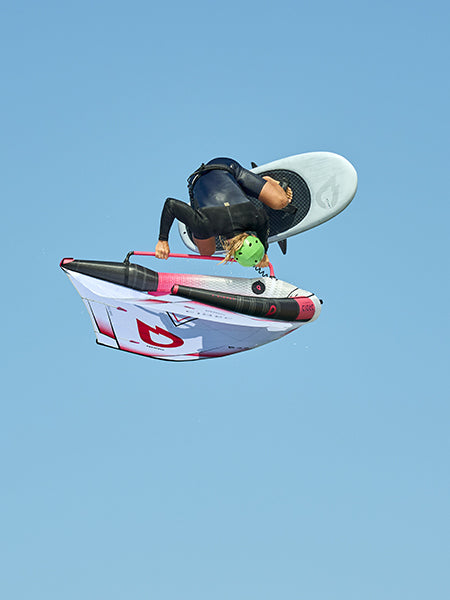
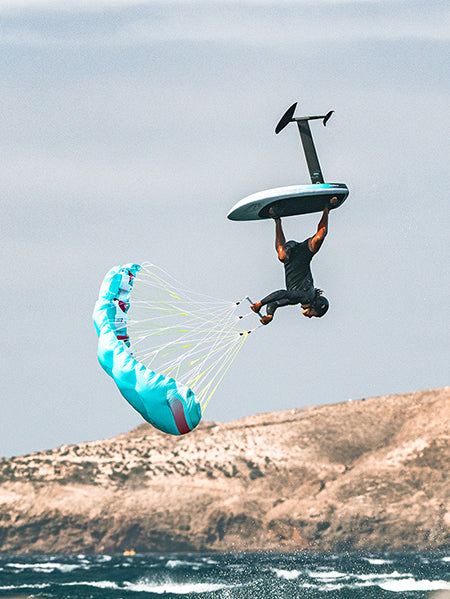
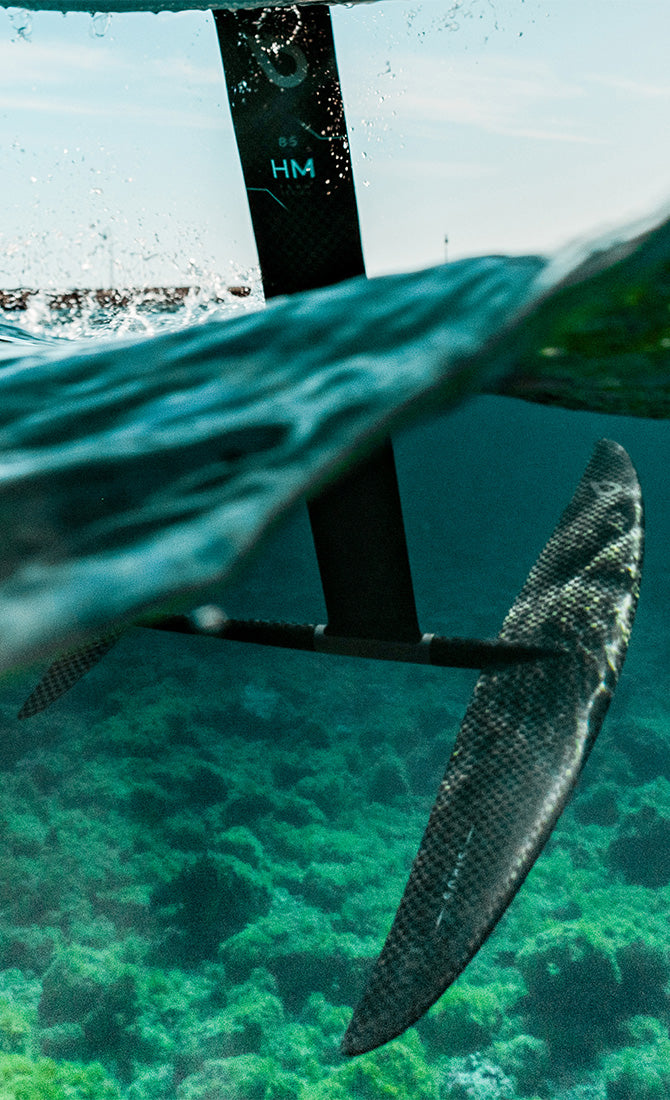


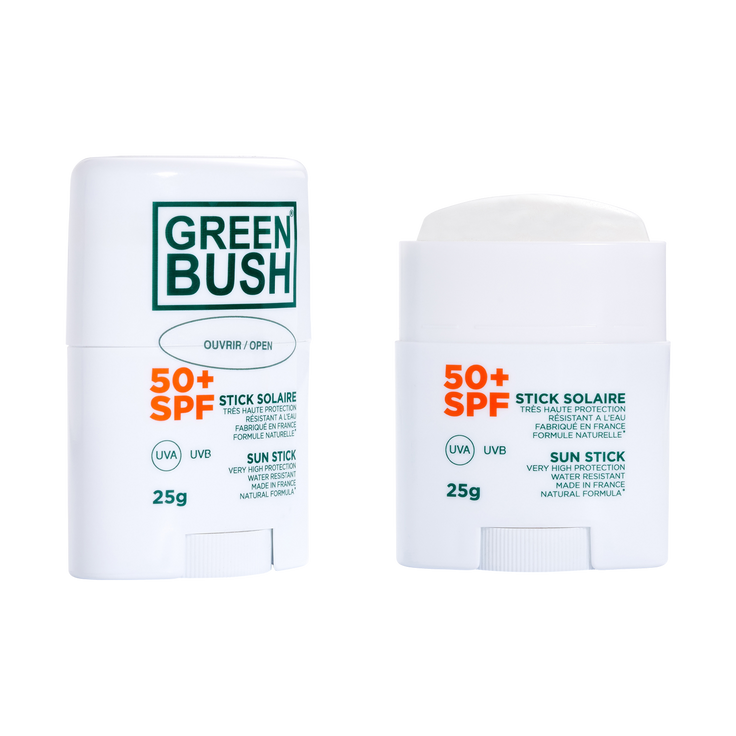



2 comments
Les explications sont claires, j’essaie ça cet après-midi.Merci
Bonnes explications , je retrouve mes erreurs. Je vais corriger .
Merci